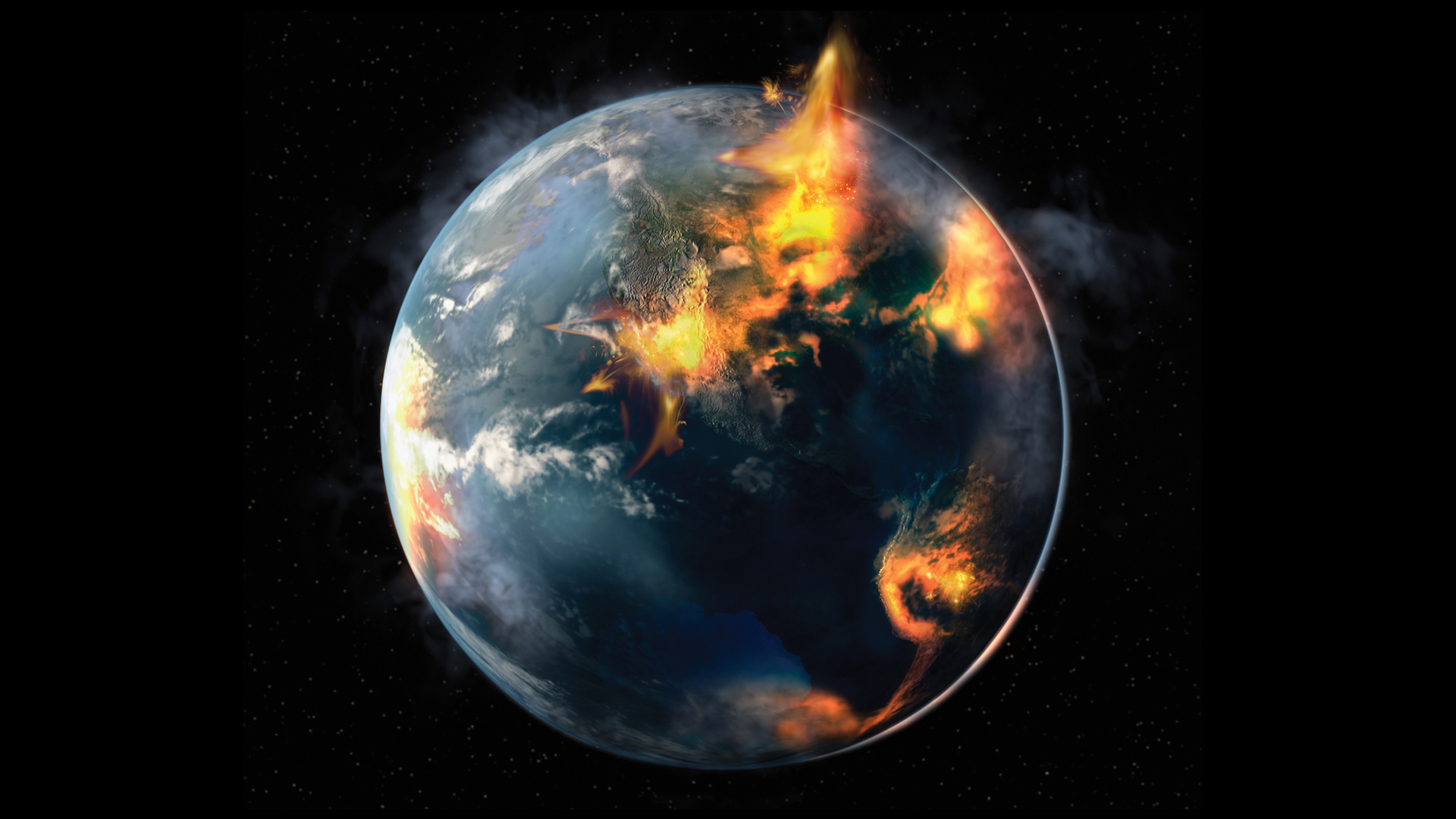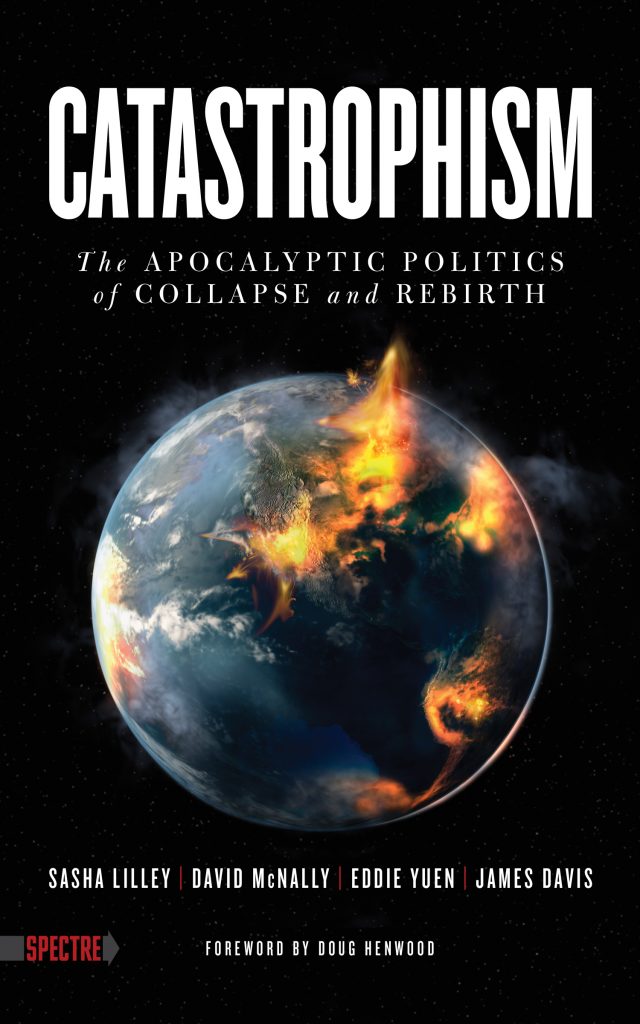by David Laibman
Science & Society
Volume 78, No. 2
April 2014
Catastrophism: The Apocalyptic Politics of Collapse and Rebirth, by Sasha Lilley, David McNally, Eddie Yuen, and James Davis. Foreword by Doug Hen- wood. Oakland, California: pM press, 2012. paper, $16.00. pp. xv, 163.
This short volume is an exemplary contribution to the growth of a mature, self-reflective left. It consists of four chapters, one by each of the co-authors of the volume; an introduction by Sasha Lilley; and Doug Henwood’s fore- word. in the introduction we are told that the book “evolved out of many conversations within the retort Collective . . .”, described as “providing radi- cal antinomian comradeship, but eschewing any party lines or set positions” (13). its central message is for the left: catastrophism — the assumption that society is headed for total collapse — is bad analysis and leads to ineffective politics.
Eddie Yuen’s essay, “The politics of Failure Have Failed: The Environ- mental Movement and Catastrophism” (chapter 1) examines the catastrophic side of ecological thinking, citing the avalanche of recent writing on carbon emissions, global warming, tipping points, deforestation, resource wars, tens of millions of climate refugees, etc., all pointing to some sort of collapse of civilization itself, and calling into question the possibility of any political solution, i.e., of a social organization beyond capitalism that might achieve sustainable human development. He argues, persuasively i believe, that “an undifferentiated narrative of environmental doom is disempowering and encourages feelings of helplessness. . . . The fear elicited by catastrophism disables the left but benefits the right and capital” (21, 41–2). a reoriented radical environmental movement, rooted in networks of communities, can- not wait for capitalism to implode, and for this activism to emerge “it is vital that a movement offer something positive to go with the cold porridge of climate catastrophe” (43).
Chapter 2, “Great Chaos Under Heaven: Catastrophism and the Left,” is by Sasha Lilley, and presents the book’s core argument. it surveys the “two major traditions of the radical left in the Global North, Marxism and anarchism” (45), reviewing formulations from Marx and Engels, Kautsky, Luxemburg, Lenin, Gramsci, r. palme Dutt, C. L. r. James, Henryk Grossman, anton pannekoek, immanuel Wallerstein, and many others. The idea “the worse, the better” is subjected to a thorough critique. Lilley shows that Marx and Engels had com- plex views on this; while some passages suggest that crisis produces revolt, and general crisis produces revolution, others see political opposition movements as emerging from organizational victories and maturation of consciousness. Historical evidence suggests that, with the possible exception of war, moments of crisis in societies have not been associated with progressive outcomes. The idea of fomenting radical change by deliberately instigating chaos is traced in the writings of various anarchists and anti-state communists, and found wanting. Lilley concludes that the “determinist–voluntarist dyad” driving left catastrophism must be transcended. She writes:
No amount of fire and brimstone can substitute for the often-protracted, difficult, and frequently unrewarding work of building radical mass movements, even under situations of the utmost urgency. When they deploy catastrophic rhetoric, radicals overlook the diminishing returns and distorting effects it has on the forms of organiz- ing it does manage to inspire. . . . if we are committed to the demise of capitalism, we should steer well clear of catastrophism. (76.)
The third chapter, “at War with the Future: Catastrophism and the right,” by James Davis, shifts the focus to the political right. Here we en- counter “catastrophe as cure,” in the form of religious millennialism and the rapture, along with the related view that associates catastrophe with progress, tracing all manner of evils back to the French revolution, for example. “Dis- ease catastrophism” takes many forms, all of which however involve the virus of equality and democracy and modernity infecting a once-proud European and Christian civilization and dragging it down to disaster. “Much as the communist threat provided a useful ideological rudder to the militarized economy during the Cold War, so the fantasy of the islamization of Europe, guided by a liberal elite of politicians, intellectuals, and bureaucrats in con- spiratorial league with their islamic comrades ticks a number of important boxes for the contemporary right” (93). Davis is clear: “Catastrophism is a less ambivalent strategy for the right than for its adversaries on the left” (106). The description here is useful, but this chapter has a less pointed message for the book’s audience than do the preceding two chapters.
The final chapter, by David McNally, “Land of the Living Dead: Capital- ism and the Catastrophes of Everyday Life,” is a wonderful foray into the literary and cinematic world of monsters, focusing on Dr. Frankenstein’s creation and on zombies. These latter, originating in West africa, entered into american consciousness through the influential 1929 book by William Seabrook, The Magic Island, about modern Haiti. There “zombies . . . acquired their unique meaning as the animated dead, mere flesh and bones toiling on behalf of others” (115). The legends took on force during the U. S. occupa- tion of Haiti, when marines terrorized the local population into the status of forced laborers engaged in road-building and other construction.
Zombies, as “crazed consumers and lifeless laborers,” became a cultural artefact that mirrors the conditions of exploited and dominated people, in all periods of 20th-century U. S. capital accumulation. This radical reading of the monster genre can help us “to uncover the social basis of all that is truly horrifying and catastrophic about our world, as part of a critical theory and practice designed to change it” (127). McNally’s use of “catastrophic” in an everyday or micro sense appears as a rather forced effort to integrate this chapter into the overall project of the book; the chapter is highly entertaining and informative, even if this integrative effort is judged to fall a bit short.
Returning to the book’s main theme: one can only second the authors’ call for the left to move well beyond all versions of catastrophic thinking, fatalist or voluntarist, and to build broad movements that generate optimism derived from possibilities that only arise when small steps are connected with larger ones, and unity is cultivated among activists with different under- standings of society and social change. That is, as indicated, the book’s core message, and it is long overdue.
One quibble. i have a gnawing feeling of uncertainty regarding Eddie Yuen’s essay on environmental catastrophism. When we think about, e.g., Bill McKibben’s “terrifying new math” concerning CO2 emissions and global warming, i want, with Yuen, to say that this message of doom will lead to apathy and inactivity, so we need a better message! Here, however, we must confront the hard facts emerging from scientific evidence. While the evidence is not all in, and Yuen and his co-authors are right to say that it is not only about what scientists find but also about what we are able to do now, in move- ment building, it is at least possible that the best message we can hear, and/ or achieve, is a rather catastrophic one. in that case, we need the humanly best conceivable response to the impending catastrophe; that would be the most we can do. The scientific moment in the Marxist heritage enjoins us from slaying the messenger, just because we don’t like the message.
Back to Sasha Lilley’s Author Page | Back to David McNally’s Author Page | Back to Eddie Yuen’s Author Page | Back to James Davis’s Author Page







